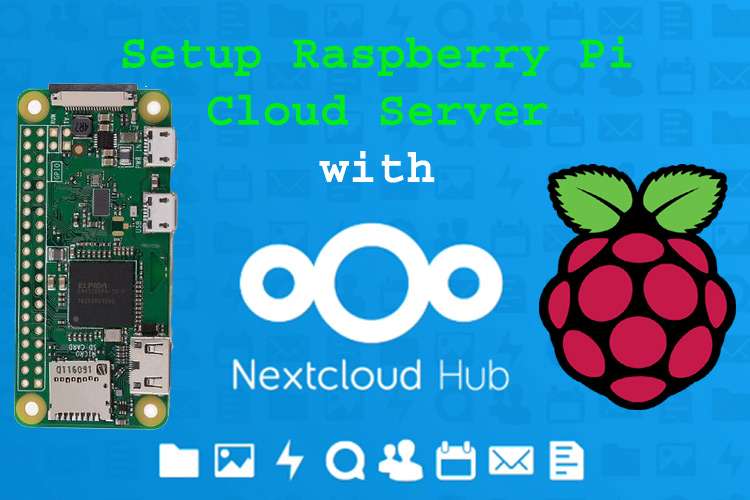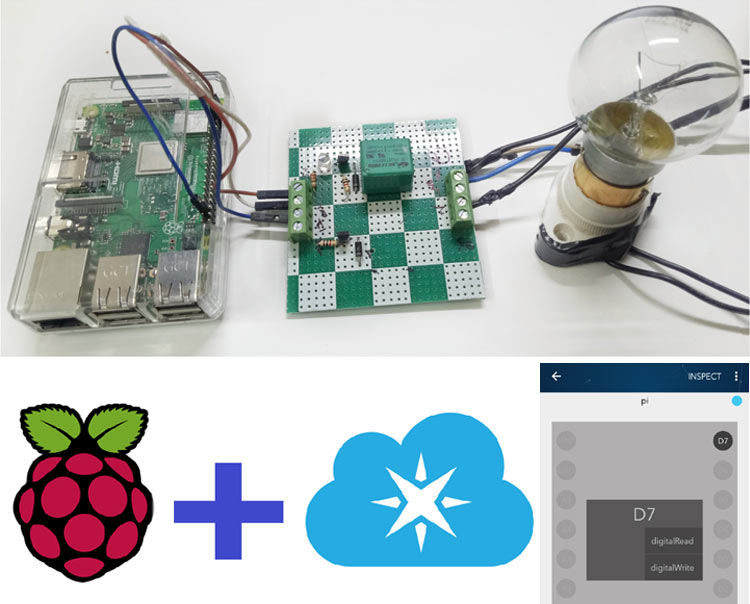Raspberry Pi IoT: Cloud Servers, Projects & Free Options!
Ever dreamt of commanding a fleet of smart devices from anywhere in the world? The Raspberry Pi, that unassuming little board, is your gateway to making that dream a reality, offering a surprisingly powerful and cost-effective way to build your own Internet of Things (IoT) empire.
The Raspberry Pi's versatility stems from its ability to bridge the gap between the physical world of sensors and actuators and the vast expanse of the cloud. Forget being limited by expensive, proprietary systems. With a Raspberry Pi and a bit of know-how, you can create custom solutions tailored precisely to your needs. Whether you're monitoring your home garden, automating industrial processes, or building the next generation of smart city infrastructure, the Raspberry Pi provides a flexible and accessible platform to bring your ideas to life.
| Attribute | Details |
|---|---|
| Name | Raspberry Pi (General) |
| Function | Single-board computer, ideal for IoT projects, automation, and learning |
| Operating Systems | Raspbian (Debian Linux), Ubuntu, Windows 10 IoT Core, Android, and others |
| Key Features | GPIO pins for interfacing with sensors and actuators, Ethernet/Wi-Fi connectivity, HDMI output, USB ports |
| Use Cases | Home automation, environmental monitoring, robotics, media servers, industrial control, IoT gateways |
| Cost | Varies depending on the model (Zero, 3, 4, 5); typically between $5 - $75 |
| Connectivity | Wi-Fi, Bluetooth, Ethernet |
| Programming Languages | Python (most popular), C/C++, Java, JavaScript |
| Community Support | Extensive online community and resources available |
| Reference Link | Raspberry Pi Foundation |
One of the most appealing aspects of using a Raspberry Pi in IoT projects is the potential to create a free cloud server setup. Building your own server eliminates the recurring costs associated with paid cloud hosting services, putting you in control of your data and infrastructure. While setting up your own server may require some initial effort, the long-term cost savings and increased flexibility can be significant.
- Movie Rulz In Kannada Your Ultimate Guide To The Kannada Film Universe
- Filmyfly Bollywood Hindi Dubbed Your Ultimate Guide To Hindi Dubbed Movies
But a free setup doesn't mean sacrificing functionality. By leveraging open-source software and cloud platforms with generous free tiers, you can build a robust and scalable IoT solution. Google IoT Cloud, for instance, offers a substantial free tier that allows you to experiment and develop your projects without incurring any charges. Setting up a new cloud project can even give you $300 in cloud credits to start.
Here's how the Raspberry Pi empowers your IoT journey:
- Cost-Effectiveness: The Raspberry Pi itself is an affordable device, and pairing it with free cloud services allows you to minimize your overall project expenses.
- Flexibility: You have complete control over your hardware and software configurations.
- Scalability: As your project grows, you can easily scale your resources by upgrading your Raspberry Pi or utilizing more advanced cloud services.
- Learning Opportunity: Building your own IoT cloud server is an excellent way to learn about cloud computing, networking, and system administration.
Let's delve into the specifics of how a Raspberry Pi can be used in conjunction with cloud platforms to achieve various IoT functionalities.
- Unveiling Filmywap South Your Ultimate Guide To The World Of South Indian Cinema
- Agra Movie Movierulz Ibomma Hindi Dubbed Your Ultimate Guide To Movie Downloads
The Raspberry Pi shines as an IoT gateway. Think of it as a translator and traffic controller for your IoT devices. It sits between your local network of sensors and actuators and the wider world of the internet, allowing them to communicate seamlessly. It's compact and capable, transforming into a powerful bridge thanks to its networking capabilities.
A properly configured Pi acting as an IoT gateway provides:
- Seamless Integration: Facilitates the connection between local devices and cloud services.
- Security: Implements security measures to protect your data and devices.
- Performance: Optimizes data flow for efficient communication.
Many cloud platforms are well-suited to integrate with the Raspberry Pi. Let's explore some popular options:
- Azure IoT Hub: This article provides basic steps to connect a Raspberry Pi running Raspberry Pi OS to Azure IoT Hub. This platform is well-suited for industrial projects.
- Google Cloud IoT: As mentioned, Google Cloud offers a generous free tier, making it ideal for learning and prototyping. It, like Azure, works best for big industrial projects.
- Amazon AWS IoT: AWS IoT provides a comprehensive set of services for building IoT solutions. You can register a "thing" on the AWS IoT platform to get started.
Connecting your Raspberry Pi to a cloud platform like Azure IoT Hub involves several steps:
- Prerequisites: Ensure you have the necessary software and hardware components, including a Raspberry Pi device (either physical or emulated).
- Update: Start by updating your Raspberry Pi's operating system:
sudo apt update sudo apt upgrade - Configuration: Follow the platform-specific instructions to configure your Raspberry Pi to communicate with the cloud service.
There are numerous open-source IoT platforms that seamlessly integrate with the Raspberry Pi. One notable option is Thinger.io. Its key features include:
- Open Source Libraries: Use the open-source libraries to connect your devices to the platform.
- Cloud Installation: Install the server on your own cloud infrastructure.
- Broad Hardware Support: Thinger.io supports a wide range of hardware boards, including Arduino, ESP8266, Raspberry Pi, and Intel Edison.
The versatility of the Raspberry Pi allows it to run a wide range of operating systems. Some popular choices include:
- Raspbian (Debian Linux): The officially supported operating system for Raspberry Pi.
- Ubuntu: A popular Linux distribution known for its ease of use.
- Windows 10 IoT Core: A specialized version of Windows designed for IoT devices.
- Android: Run Android on your Raspberry Pi for mobile-like applications.
Raspberry Pi has evolved over several iterations, each with its own specifications and capabilities. The Raspberry Pi 3 and Raspberry Pi Zero are two particularly popular models. The Raspberry Pi offers cost-effective computing for both businesses and home use.
Imagine a scenario where your Raspberry Pi needs to access internet services from anywhere, even without a traditional Wi-Fi connection. That's where cellular connectivity comes in. Combine a Raspberry Pi with a cellular GSM and GPS breakout board (like the FONA) to unlock new possibilities.
With this setup, you can:
- Access the internet from anywhere with cellular coverage.
- Utilize GPS data for location-based applications.
- Combine cellular capabilities and GPS data on a single Raspberry Pi.
To start a basic IoT project with Raspberry Pi, consider the following:
- Set Up a Raspberry Pi Reed Switch Circuit: This assumes you have this already.
- Connect to a Cloud Server: Upload data to a cloud server like ThingSpeak.
For example, you might have a project where you need to control devices remotely. Instead of hosting the web server component of your project on the Raspberry Pi itself, you could move it to a cloud server. The sensor/control part of your project (running on the Raspberry Pi) can then communicate with the web server component in the cloud via a messaging system.
The combination of a Raspberry Pi and a cloud platform provides endless possibilities for IoT engineers, developers, and tinkerers. You can use these technologies to test platforms and build your own IoT projects.
Some platforms, like ThingSpeak, offer free plans that include:
- Support for up to 5 IoT devices.
- Free mobile apps for Android and iOS.
- Limited free cloud data storage.
- Libraries for working with various hardware components.
Here's a simple example of an IoT project using a Raspberry Pi and a cloud server:
- Install the Operating System: Start by installing an operating system like Raspbian on your Raspberry Pi.
- Upload Data to the Cloud: Use a cloud server like ThingSpeak to store data collected by your Raspberry Pi.
The Raspberry Pi is more than just a compact computer; it's a versatile tool for building IoT solutions. Why choose it for your IoT cloud server setup?
- Powerhouse: It's a powerful device suitable for makers, hobbyists, and professionals.
- Cost-Effective: It offers a budget-friendly way to experiment and develop IoT projects.
Here are some resources to guide you further:
- Video Tutorials: Check out video tutorials on how to create a Raspberry Pi IoT server.
- Node.js: Learn how to connect your Raspberry Pi to the cloud using Node.js.
- IoT Platforms: Refer to lists of top IoT platform companies and open-source/free IoT platforms to find the right solution for your needs.
To automate and streamline your IoT device deployment process, consider solutions that offer:
- Secure device enrollment.
- Automated firmware builds.
- OTA (Over-the-Air) updates.
Keep in mind that setting up a cloud project for the first time often comes with benefits like free cloud credits and a generous free tier.
While the US Dollar (USD) and Turkish Lira (TL) may seem unrelated, understanding the dynamics between them can indirectly affect the cost of components used in IoT projects, as global electronics markets are often influenced by currency fluctuations.
In summary, the Raspberry Pi, with its affordability, versatility, and extensive community support, is an excellent choice for building your own IoT cloud server and exploring the exciting world of connected devices. Whether you're a seasoned engineer or a curious hobbyist, the Raspberry Pi empowers you to bring your IoT ideas to life.
- Mkvmoviespoint Bollywood Movies Download Mp4moviez Your Ultimate Guide
- Vegamovies In Hindi Movie Your Ultimate Destination For Bollywood Thrills

How to Set Up Your Own Raspberry Pi Zero Cloud Server with Nextcloud

IoT controlled Home Automation Project using Raspberry Pi and Particle
IoT Edge device Raspberry Pi 3 Download Scientific Diagram